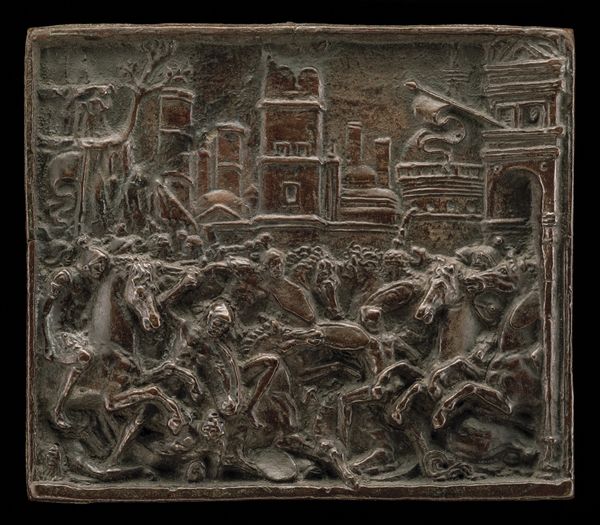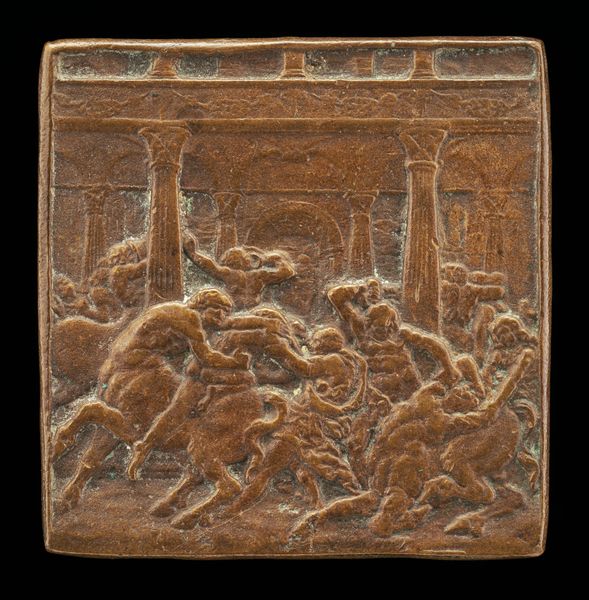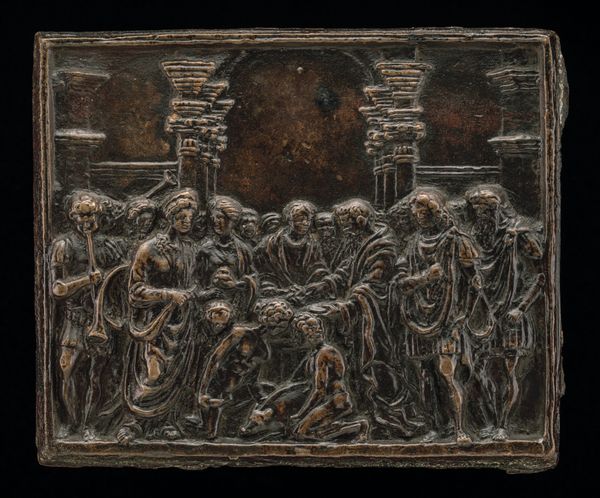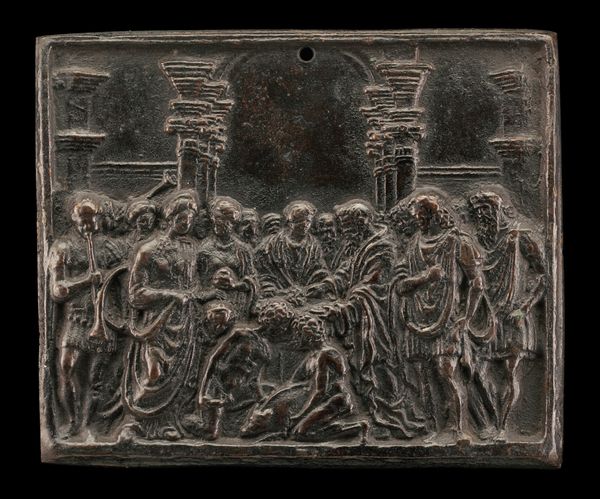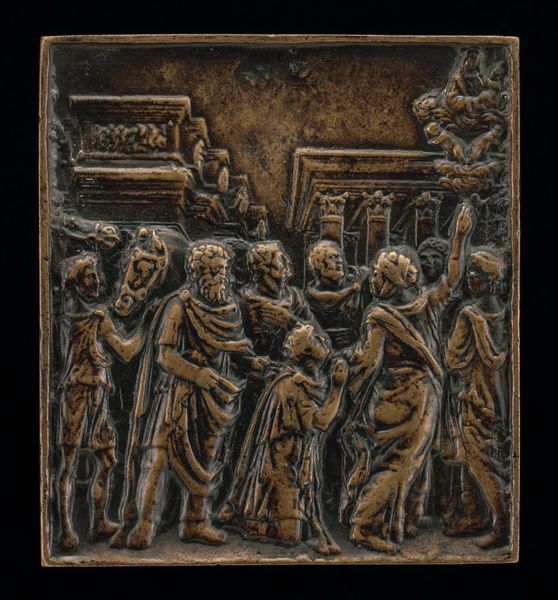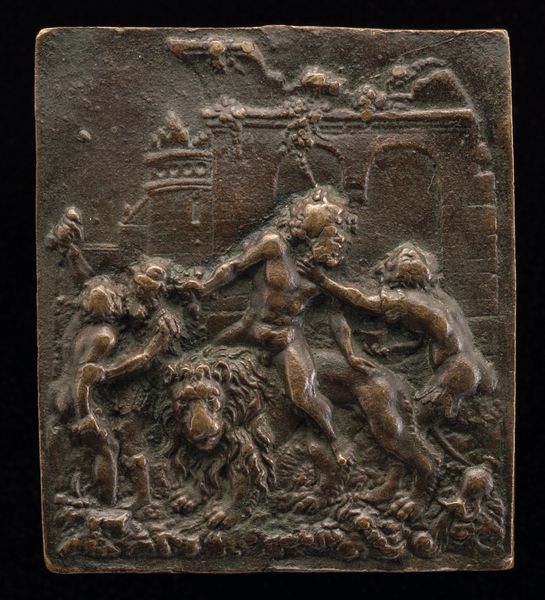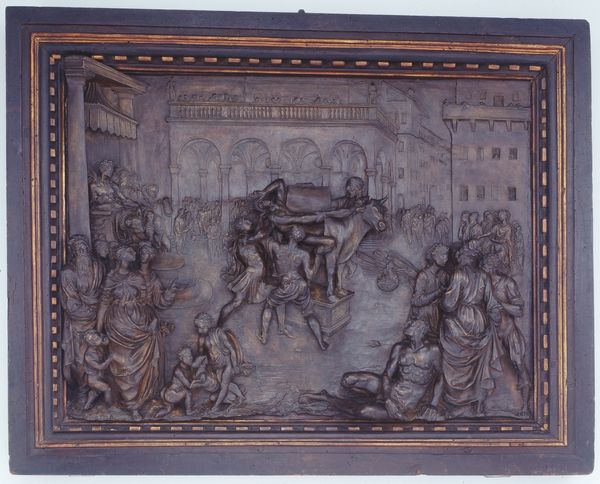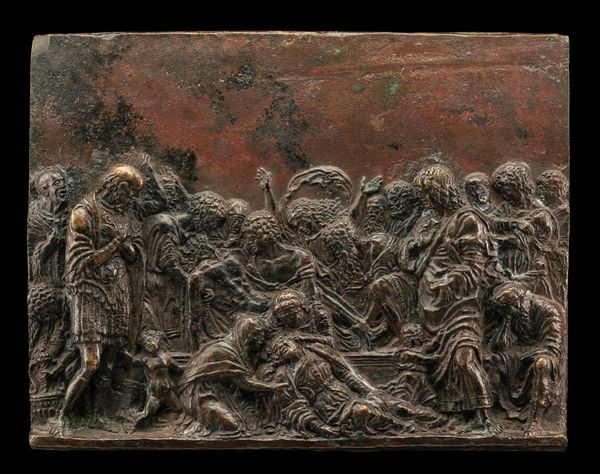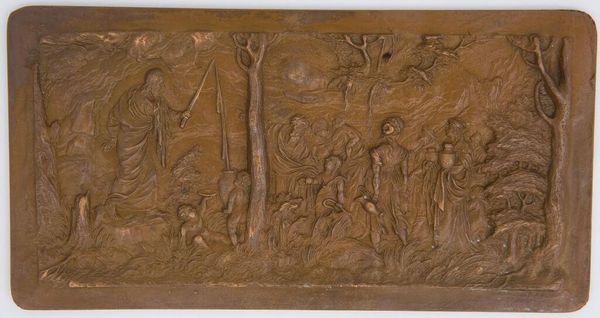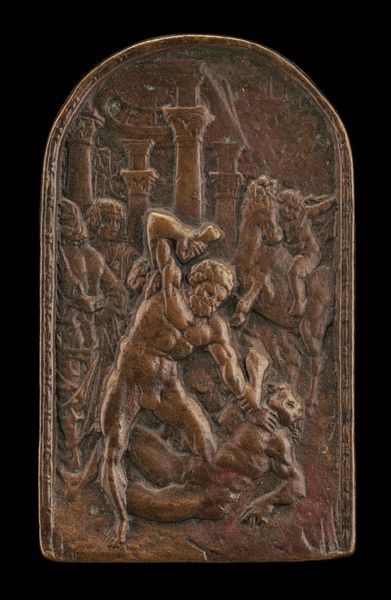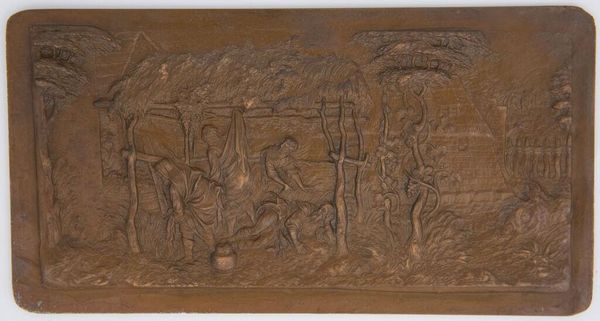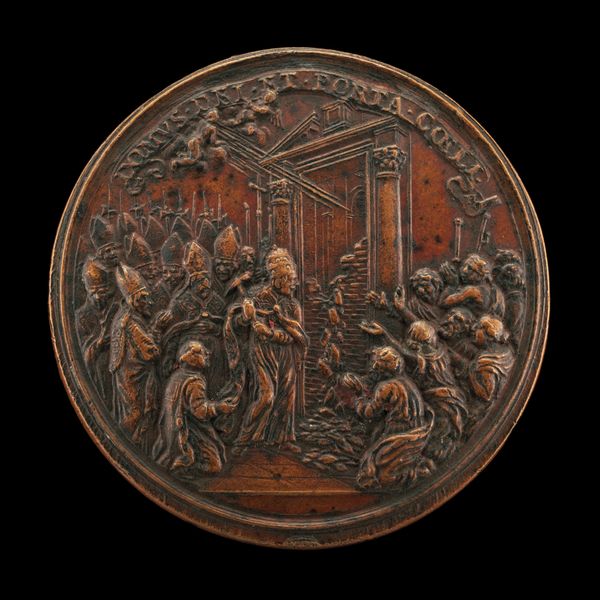
relief, bronze, sculpture
#
narrative-art
#
sculpture
#
relief
#
bronze
#
figuration
#
sculpture
#
history-painting
#
italian-renaissance
Dimensions: overall: 8.73 × 10.07 cm (3 7/16 × 3 15/16 in.) gross weight: 287.38 gr (0.634 lb.)
Copyright: National Gallery of Art: CC0 1.0
Editor: This bronze relief is called "Combat at the Gate" by Andrea Briosco, also known as Riccio. The scene feels so dynamic and crowded. I'm curious about your perspective. What structural elements strike you first? Curator: Observe how Riccio organizes the chaos of battle. The foreground presents a tangle of figures and horses, vividly rendered in high relief. As the eye moves back, the buildings of the city are depicted with successively shallower relief, almost dissolving into the background. What effect does this variation in relief create? Editor: It makes the foreground feel much more immediate and intense, pulling the viewer right into the action. It’s almost like a stage, with the city as backdrop. The level of detail is impressive. Curator: Indeed. Consider the lines formed by the bodies, the weapons, the architecture – these converging lines contribute to the overall sense of dynamism and disorder. Riccio masterfully manipulates depth to create an illusion of space. This contrast contributes to the drama of the piece. Do you see any compositional strategies the artist has deployed? Editor: Well, the way the figures are piled up feels very intentional. There's a real sense of movement but it is directed upward toward the gate in the background. Curator: Precisely. Note also the patina. Its golden hue accentuates the relief, causing the light to emphasize depth. The very materiality contributes to its powerful expressiveness. Editor: So, by focusing on composition and structure, we can appreciate how the artist creates drama. Thanks! Curator: And hopefully understand how materiality impacts expression. It’s been a stimulating exchange.
Comments
No comments
Be the first to comment and join the conversation on the ultimate creative platform.
